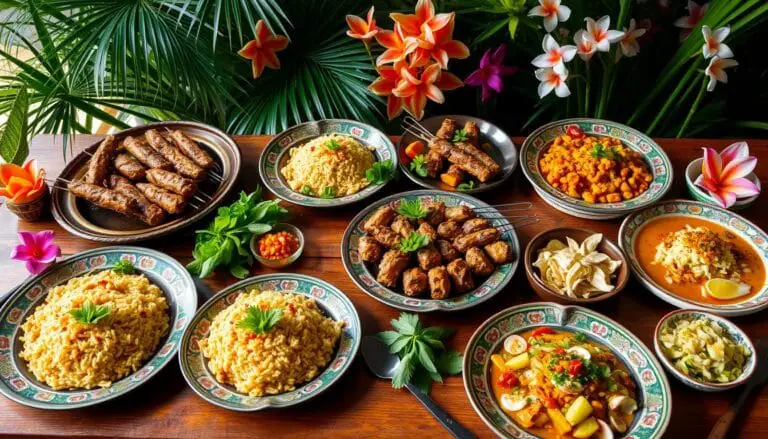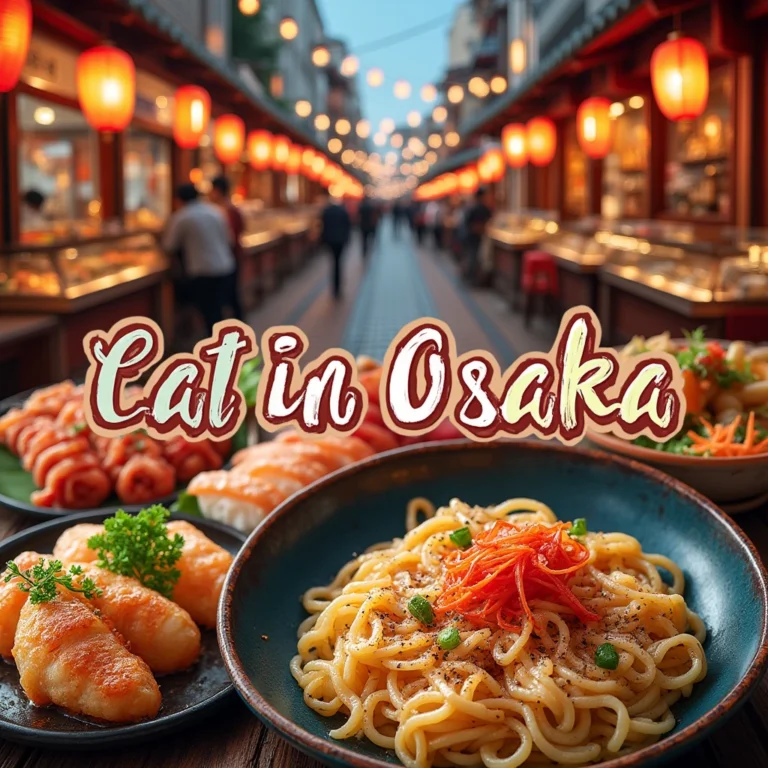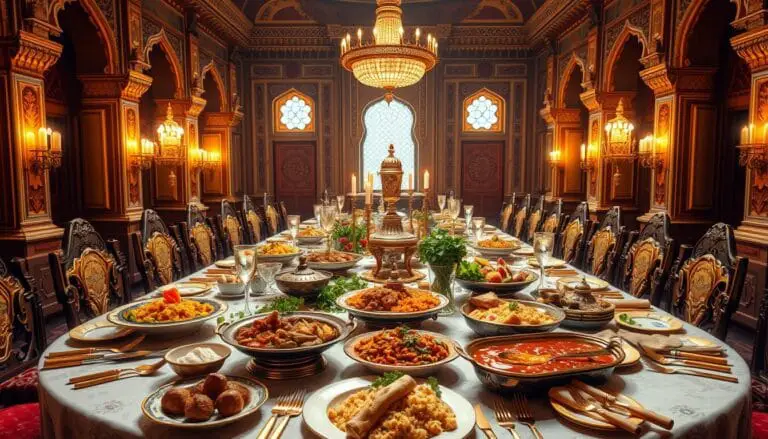Kyoto at Its Best: The Ultimate 3-Day Journey Through Temples and Culture
This site contains affiliate links . At no additional cost to you, I may receive a commission off these links. They help fund this blog. Thanks for your support! See my Disclosure Policy for more info.
Kyoto, once Japan’s capital, is a city where old traditions meet new life. Its historic streets and ancient temples invite you to dive into a world of rich culture. This three-day guide to Kyoto is your ticket to an experience that will leave you with lasting memories.
Table of Contents
Essential Planning Guide for Kyoto Travel
Planning a trip to kyoto means thinking about the best time to go, how to get there, and where to stay. Knowing these key points helps you enjoy Kyoto’s culture fully.
Best Time to Visit Kyoto
The best times to visit Kyoto are spring (March-April) and autumn (October-November). You’ll find mild weather, beautiful views, and fewer people. Spring is famous for cherry blossoms, and autumn for its fall colors.
Getting to and Around Kyoto
Getting to Kyoto is easy, thanks to its role as a major transportation hub. The bullet train from Tokyo takes about 2.5-3 hours. Inside Kyoto, the subway and buses make it simple to see all the sights.
Where to Stay in Kyoto
Stay in Gion or Higashiyama for easy access to Kyoto’s old districts and cultural spots. These areas have many places to stay, from traditional ryokans to modern hotels. The Granbell Hotel in Gion is a great choice, blending Japanese style with modern comforts.
| Accommodation | Location | Highlights |
|---|---|---|
| Granbell Hotel | Gion District | Traditional Japanese design, modern comforts |
| Ryokan Onsen | Higashiyama District | Authentic ryokan experience, natural hot springs |
| Shared House | Various Neighborhoods | Blend of traditional and contemporary, more affordable |
Kyoto Three Day Itinerary Overview
Your kyoto itinerary and kyoto sightseeing plan for three days in Kyoto will take you deep into the city’s rich culture. Day one focuses on the historic Gion District and eastern Kyoto. You’ll see famous temples like Kiyomizudera.
Day two takes you to the Fushimi Inari Shrine and vibrant cultural markets. Day three explores western Arashiyama, with its Bamboo Grove and the Golden Temple.
This itinerary mixes must-see spots with hidden gems. It gives you a full taste of Kyoto’s culture and history. You’ll learn the best times to visit, how to get around, and where to stay.
| Kyoto Itinerary Highlights | Key Details |
|---|---|
| Day 1: Gion District and Eastern Kyoto |
|
| Day 2: Sacred Paths and Cultural Markets |
|
| Day 3: Arashiyama and Golden Temple |
|
This kyoto itinerary and kyoto sightseeing plan will make you love Kyoto’s beauty and culture. You’ll see amazing landscapes, historic sites, and unforgettable moments.
Day One: Exploring Historic Gion District
Dive into Kyoto’s Gion district, a place filled with charm. It shows off the city’s geisha culture and old buildings. Start your day at the famous :
Kiyomizudera Temple
, a UNESCO World Heritage site. It’s known for its wooden stage and amazing views of the city.
Walk through the temple’s green spaces. Here, you can honor the Kannon Bodhisattva, the Buddhist goddess of mercy. The main hall’s veranda, 13 meters high, gives you stunning views of Kyoto. As you see the temple, notice the detailed work and history that make it special.
After visiting the temple, explore the :
Gion’s Traditional Streets
. Look for geishas on their way to appointments and visit old tea houses. These places have hosted Kyoto’s cultural leaders for years. Walking these streets, you’ll see the famous machiya townhouses and feel the area’s old-time charm.
As night falls, head to the :
Yasaka Shrine
. This Shinto shrine lights up beautifully at night. See the shrine’s famous pagoda and the calm grounds. Here, locals gather for festivals and rituals. Ending your day here is perfect for your time in theGion district of Kyoto.
Day Two: Sacred Paths and Cultural Markets
Start your second day in Kyoto with a visit to the Fushimi Inari Shrine. It’s famous for its bright orange torii gates. Hike through the forest trails, enjoying the calm before it gets busy. The whole trail takes 2-3 hours, offering beautiful views and a peaceful escape.
Next, visit the lively Nishiki Market, known as “Kyoto’s Kitchen.” Walk through the stalls, trying local foods and seeing fresh produce, seafood, and Japanese crafts. With over 130 shops, it’s a deep dive into Kyoto’s culture.
| Attraction | Highlights | Estimated Time |
|---|---|---|
| Fushimi Inari Shrine | Thousands of iconic torii gates, serene forest trails | 2-3 hours |
| Nishiki Market | Over 130 stalls, local cuisine and crafts | 1-2 hours |
In the evening, check out Pontocho Alley. It’s a narrow street with traditional houses and cozy restaurants. It’s a great place to find a delicious dinner and see Kyoto’s geisha culture.
Kyoto is a city of sublime aesthetics, refined tastes, and deeply rooted traditions. Exploring its sacred paths and vibrant cultural hubs is a truly immersive experience.
Day Three: Arashiyama and Golden Temple
On your third day in Kyoto, explore the magical Arashiyama district and the famous Kinkaku-ji (Golden Temple). Begin with a visit to the peaceful Arashiyama Bamboo Grove. Here, you can enjoy the calm beauty of tall bamboo swaying in the wind.
Bamboo Grove Experience
Walking through the Arashiyama Bamboo Grove is like stepping into a world of peace and wonder. The green bamboo forest is a stunning sight. The sunlight passing through the bamboo creates a magical feel.
Monkey Park Adventures
Then, head to the Kyoto Monkey Park Iwatayama to see the playful Japanese macaques. Located on Iwata mountain, it offers great views of the city. Don’t forget to bring snacks to feed the monkeys, but follow the park’s rules for a safe visit.
Kinkaku-ji Temple Visit
End your Kyoto trip with a visit to the Kinkaku-ji (Golden Temple). This famous landmark is a sight to behold. The golden pavilion’s reflection in the pond is breathtaking. Take your time to enjoy the peaceful surroundings and take amazing photos.
The Arashiyama Bamboo Grove is a truly magical place, where the verdant bamboo stalks seem to stretch endlessly towards the sky.
Traditional Japanese Experiences in Kyoto
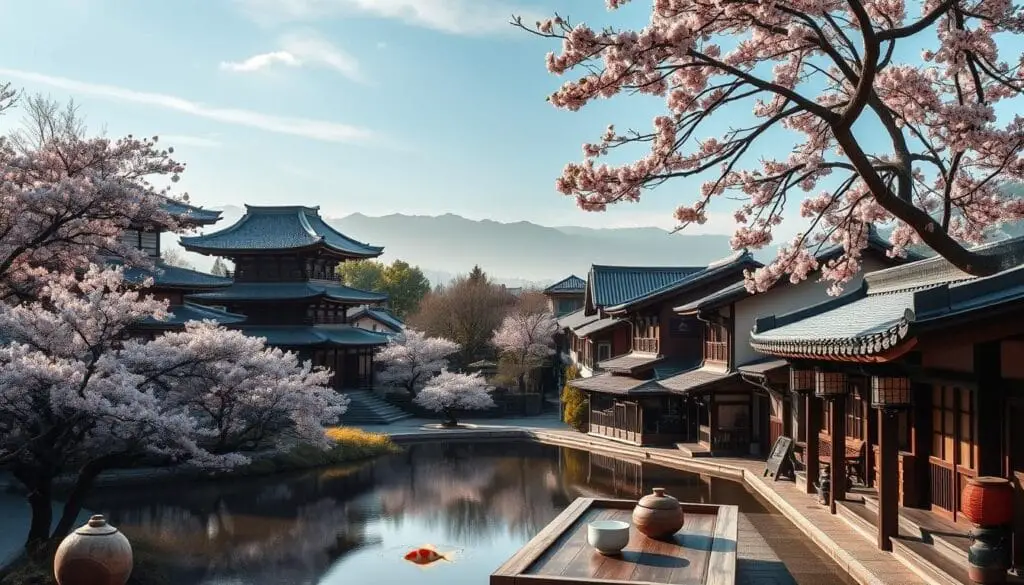
Kyoto is the heart of Japan’s culture. It offers many chances to dive into traditional Japanese experiences. You can join a tea ceremony or wear a kimono to learn about Japan’s rich heritage.
Discover the Art of the Tea Ceremony
Visit Jotokuji Temple to enter the calm world of the Japanese tea ceremony. Here, you’ll learn how to make matcha, the green tea, with a tea master. This experience will show you the beauty and importance of this ancient ritual.
Dress in a Kimono and Explore Historic Districts
Rent a kimono to feel the beauty of traditional Japanese clothes. Then, walk through Kyoto’s old districts like Gion and Higashiyama. You’ll see amazing buildings and take great photos, feeling the true kyoto cultural experiences.
Unwind with Zen Meditation and Culinary Workshops
Try Zen meditation or a cooking class to explore Kyoto’s spiritual and food traditions. You’ll learn about mindfulness and Kyoto’s famous dishes. This will connect you deeply with the city’s culture.
These kyoto cultural experiences let you travel back in time and understand Japan’s traditions well. Whether you’re drinking matcha, wearing a kimono, or learning about food and spirituality, Kyoto will amaze you and stay with you forever.
Dining Guide: From Street Food to Fine Cuisine
Kyoto is a food lover’s dream, with everything from street food to fine dining. You can find authentic Kyoto dishes or try something new. This guide will take you on a tasty tour of the city’s food scene.
Nishiki Market Specialties
Visit Nishiki Market, known as “Kyoto’s Kitchen.” Here, you’ll find amazing street food. Try candied fruits, dango, and takotamago, a quail egg in an octopus head.
Don’t miss the dashimaki tamago at Miki Keiran. Or the savory sparrow skewers, seasoned with soy sauce and spices.
Traditional Tea Houses
Experience Kyoto’s traditional tea houses. They offer matcha and wagashi, Japanese sweets. Learn about the tea ceremony and enjoy the elegance of these historic places, often in Gion.
Best Local Restaurants
For a full meal, try Kyoto’s top local restaurants. Enjoy Kyo-ryori, with its five Japanese culinary styles. Try Kyoto-style ramen at Ramen Miyako or yuba at Minokichi.
Discover Kyoto’s sake at Fushimi. From street food to tea houses and local dishes, Kyoto’s food scene is unforgettable. Dive into the flavors that make this city special.
| Specialty | Description | Location |
|---|---|---|
| Takotamago | Mini-sized octopus head stuffed with quail egg | Nishiki Market |
| Dashimaki Tamago | Rolled omelette | Miki Keiran, Nishiki Market |
| Sparrow Skewers | Seasoned with soy sauce and condiments | Kawazaka no Toyo, Nishiki Market |
| Yuba | Delicate tofu skin, rich in protein | Minokichi Restaurant |
| Kyo-ryori | Five distinct styles of Japanese cuisine originating in Kyoto | Variety of local restaurants |
Temple Etiquette and Cultural Tips
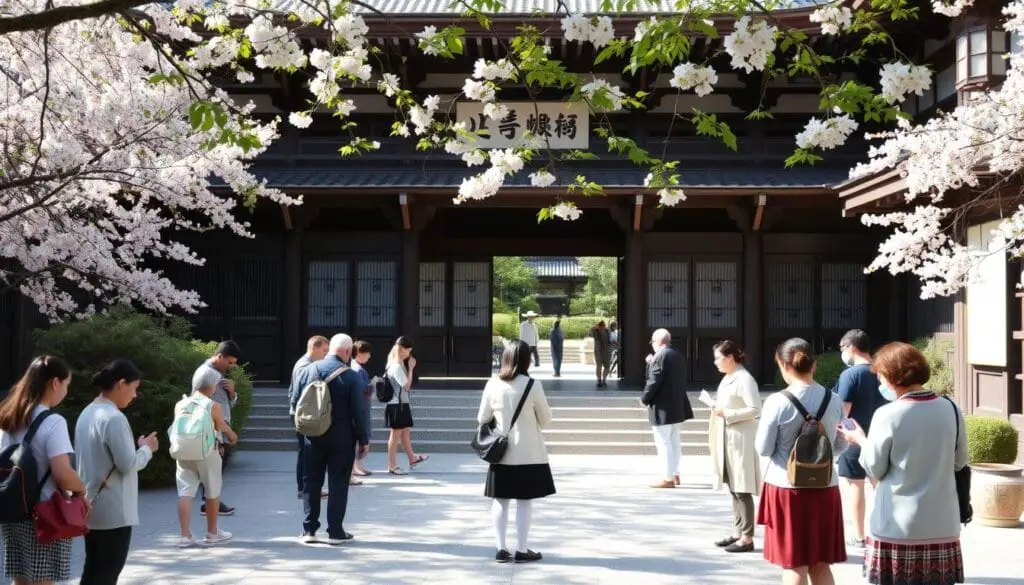
Exploring Kyoto’s temples and shrines needs respect and mindfulness. Here are some key japanese temple etiquette and kyoto cultural tips. They’ll help you have a rich and meaningful visit.
- Take off your shoes before entering temples and traditional homes. This shows respect for the sacred places.
- When you meet someone, bow slightly. This is a polite way to greet in Japan.
- Be quiet and thoughtful in temples and shrines. Try not to make loud noises or disturb others.
- Don’t eat while walking. Look for a place to sit and enjoy your food or snacks.
- Learn basic Japanese phrases like “thank you” (arigatō) and “excuse me” (sumimasen). The locals will thank you for it.
By following these japanese temple etiquette and kyoto cultural tips, you’ll show respect in Kyoto. You’ll also have a more immersive and meaningful trip.
Embrace the cultural traditions of Kyoto, and you’ll leave with a deeper understanding and appreciation for this remarkable city
Photography Spots and Best Views in Kyoto
Kyoto is a dream for photographers. It has over 1,600 temples, 400 shrines, and 17 UNESCO sites. The city is full of stunning views and landmarks. Whether you’re new to photography or experienced, Kyoto has endless beauty to capture.
Begin at the Kiyomizudera Temple for amazing city views. Explore the Gion District to see geisha and maiko in their colorful kimonos. This creates a timeless scene.
The Fushimi Inari Shrine is a must-see. It has thousands of orange torii gates on Mount Inari. The best time to visit is an hour after sunrise for fewer crowds and soft light.
- Capture the serene reflection of the Golden Pavilion (Kinkaku-ji Temple) in the pond
- Visit the Arashiyama Bamboo Grove early for shots of the green stalks without crowds
- See the Hanatoro Festival in the Higashiyama District for paper lanterns lighting up the streets
- Admire the cityscapes from the Yasaka Pagoda at sunset
Kyoto is full of photography spots and best views. It has a rich history, vibrant culture, and stunning natural beauty. Whether you want iconic landmarks, serene scenes, or street life, Kyoto will inspire your photography.
Kyoto is a city of a thousand images, each fading moment another opportunity for a photograph. – John McDermott
Conclusion
Kyoto is a mix of old traditions and new Japanese culture. It’s a top spot for those wanting to dive deep into a culture. This three-day plan shows you the city’s key kyoto must-see attractions. You’ll see places like the Gion district and the peaceful Arashiyama bamboo grove.
It also includes chances to learn about local culture, like visiting tea houses and Nishiki Market. With good planning and respect for local ways, you can enjoy Kyoto fully. This guide helps you navigate the city and avoid crowds, giving you the best kyoto travel tips.
Kyoto’s history, temples, and culture are all waiting for you. This three-day trip is a magical journey through Japan’s most beautiful city.
Check Out These Posts: 10-Day Japan Itinerary: Your Guide to Epic Adventures Ahead
FAQ
What is the best time of year to visit Kyoto?
Spring (March-April) and autumn (October-November) are the best times to visit Kyoto. The weather is perfect, and the scenery is stunning. Summer is very hot and humid. Winter is colder but less crowded.
How do I get to and around Kyoto?
You can get to Kyoto by bullet train from cities like Tokyo or Osaka. For local travel, use the subway and bus system. Stay in Gion District or Higashiyama for easy access to attractions.
What are the top attractions to see in Kyoto’s three-day itinerary?
Must-see spots include Kiyomizudera Temple, the Gion District, and Fushimi Inari Shrine. Don’t miss the Arashiyama Bamboo Grove and Kinkaku-ji (Golden Temple). The itinerary also includes cultural experiences like traditional tea ceremonies and kimono dressing.
What are some tips for respecting local customs in Kyoto?
To respect local customs, remove your shoes in temples and homes. Bow slightly when greeting people. Be quiet and respectful in temples and shrines. Avoid eating while walking. Learn basic Japanese phrases for politeness.
What are the best photography spots in Kyoto?
The best spots for photos include the wooden stage at Kiyomizudera Temple and the iconic torii gates at Fushimi Inari Shrine. Don’t miss the Arashiyama Bamboo Grove and the reflection of Kinkaku-ji (Golden Temple). The cityscapes from Yasaka Pagoda at sunset are also stunning.



